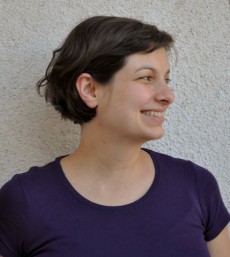
Dora Vargha History, Rutgers University 2010-2011 Dissertation Research Fellow Polio outbreaks in Cold War Hungary serve as exceptional events, through which domestic and international health policies, changes in societies and bodily images can be seen working, reacting to and interacting with each other. The geopolitical situation of Hungary and the pivotal moments of new regime, identity and nation building in the political, social and cultural sphere serves to be an ideal ground from which – through the case of polio epidemics – broader issues of global health initiatives and Cold War relations can be examined. Based on governmental and medical texts, hospital documents, media archives and oral history interviews, in my dissertation I argue that the fight against polio stood above domestic and international politics, overarching revolutions and retributions. Virologists, vaccines, iron lungs and scientific knowledge crossed the iron curtain both ways, uniting East and West in a seemingly apolitical cause: saving children from the disease. At the same time, however, this fight also became an instrument of nationalist pride, economic production, and contesting welfare policies, politicizing the bodies of potential polio victims and disabled children. Since curing the disease was not possible in most of the cases, disease prevention became the focus in battling polio. Acquiring and choosing vaccines, my dissertation shows, was a complex enterprise that created unlikely alliances and forged improbable partnerships between antagonistic geopolitical blocs, and between the Communist state and dissident emigrants to the West. Moreover, juggling between American and Soviet vaccines, Hungary traced a national health policy that challenges the conventional Cold War vision of two impermeable blocks. Through the study of polio epidemics and vaccination efforts, cooperation and interaction between East and West becomes prevalent, rendering the Iron Curtain penetrable. My dissertation asks how the Cold War concept of static boundaries changes, when looked through the lens of an epidemic whose pathogens disregarded those very borders. The PACHS research fellowship allowed me to further investigate how the production, evaluation and dissemination of medical technologies, such as vaccines are formed by politics and in turn, how medical reasoning affects global politics. The library of the University of Pennsylvania gave me insight into the American side of the Cold War perception of polio, especially to how the US government saw vaccine trials and vaccination efforts in Eastern Europe and how that influenced American evaluation of vaccine efficiency. The library holds all United States Congress hearings on polio research and vaccination from 1948. These hearings situate the Salk and Sabin vaccines, developed in the 1950s, in a geopolitical debate. The work I was able to do with the fellowship provided a much needed American perspective to my research, thereby allowing a more balanced view onto both sides of the Iron Curtain. Another very exciting archive during my research was the library of the College of Physicians. With the kind help of Annie Brogan, I was able to locate invaluable material to understanding the international manifestation of polio epidemics, and the transnational flow of scientific knowledge and medical technology. International conference proceedings, speeches, and rare medical literature gave insight into the dynamics of the international scientific community and attempts to facilitate the fight against polio on a global scale. These invaluable sources will be the base of my dissertation chapter “Parents, beware!” – vaccination efforts and the politics of prevention. I was also advised by Annie to view the temporary exhibition of the Mütter Museum, which displays a positive pressure respiratory device, commonly known as the iron lung. This technology was of crucial importance in polio epidemics all over the world, as it was capable of saving the lives of those with respiratory paralysis. Encountering this device in its physical reality, and the opportunity to examine how it worked furthered my understanding of how polio affected the lives of patients, doctors, nurses and relatives on the everyday level. The fellowship gave me an opportunity to present my work to a wider public. I will be contributing to the blog of the History of Vaccines project (here) with a post based on the findings of my research as a PACHS fellow. By encountering sources that have become fundamental for my dissertation, I was also prompted to apply for a graduate workshop at Cornell University, where I will hopefully be able to take part in a conversation that investigates Eastern Europe as a transnational region, thereby introducing the history of medicine as an analytic tool in fields and disciplines.